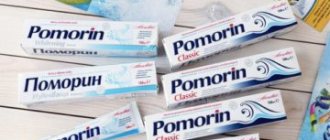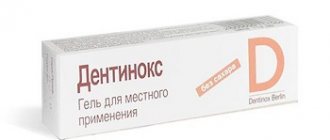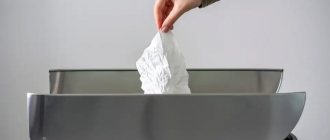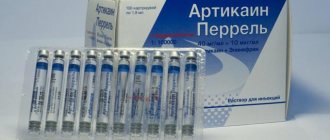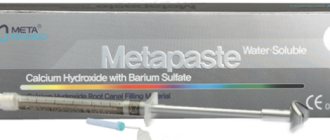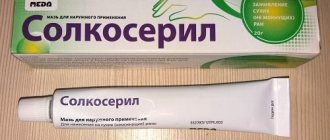1646
The safety and well-being of the patient during and after dental procedures force each clinic to introduce the latest technologies and modern materials into the work of doctors.
Of the latest developments in strengthening and restoring teeth, most dentists prefer the GlassSpan system.
What is "Glasspan"
GlasSpan (“Glasspan”) is a flexible tape based on ceramics and composite, which serves to unite teeth, that is, direct splinting. Produced by the company of the same name GlasSpan. The tape is compatible with all dental materials, resistant to moisture, and has no taste or odor. In addition, the width of various modifications of the tape does not exceed 3 mm, which allows it to remain invisible in the oral cavity, but at the same time perform its function properly.
Interesting! This product is produced in glass capsules in several versions: in the form of a tape (width no more than 2 mm), in the form of a small cord (width 1 mm), medium (width 1.5 mm) or long (width 2 mm). The length of all products of the Glasspan system is 27 cm. But, logically, it is cut into pieces - in accordance with how much a particular patient requires.
Analogs and price
Similar materials for splinting and restoring teeth are:
- Ribbon — a set of tapes made of plasma-treated polyethylene fiber to strengthen dental structures.
Properties of the material: minimal plasticity and shrinkage, practically colorless, without special treatment there is only mechanical adhesion, cannot be cleaned if dirty, is difficult to polish, does not dissolve when cut.You only need to work with cotton gloves and cut with special scissors. The average cost of a set is 7.5 thousand rubles.
- Bioloren InFibra is a splinting tape consisting of a bundle of individual polyethylene fibers. Characteristics of the material: resistant to unraveling, poorly adapted to dental tissues, minimal losses in work, difficult to work with. Approximate price – 2.8 thousand rubles.
- Fiber-Splint is a set of fiberglass braided tapes for dental restoration and splinting. Properties: the tape does not unravel, is rigid, does not adapt well to the teeth, shows minimal losses in operation, average ease of operation. The cost of the set starts from 2 thousand rubles. (depending on point of sale).
- Fiber-Splint ML is a splinting multilayer tape. The approximate price for this set is 4.5 thousand rubles. The characteristics are similar to the previous set.
The cost of the GlassSpan system ranges from 1 thousand rubles. up to 2 thousand rubles The final price for restoration/treatment of one tooth with materials from this system is about 3.5 thousand rubles.
Indications for the use of Glasspan
Splinting with glasspan tape is prescribed in various clinical situations, which makes this material almost irreplaceable in orthodontic and prosthetic dentistry. Most often, this tape is used to solve the following situations:
- emergency restoration of dentition and chewing function in case of loss of anterior incisors and canines (for example, as a result of injury),
- temporary strengthening of bridges if they have become loose,
- replantation, that is, the return of a tooth removed (due to injury or complex surgical treatment) to its own alveolus,
- tooth restoration using an intracanal pin,
- fan-shaped divergence of the upper front teeth,
- achieving retention (holding teeth in a new position) after orthodontic treatment.
The tape is fixed on the inside of the teeth, unites them into a group, thereby helping to strengthen their position. In addition, due to the strength of the material, composite materials can be strung onto the tape, which allows this option to be used for prosthetics. But, of course, temporary, because such an adhesive prosthesis will not withstand heavy loads.
Areas of application
In practice, GlassSpan is used if necessary:
- perform periodontal strengthening (splinting) of loose lateral and frontal dental elements;
- provide rapid palliative treatment;
- bring diseased and reimplanted units back to normal;
- temporarily strengthen bridge-type prostheses;
- post-orthodontic preservation;
- form a long-term or temporary connecting bridge structure;
- quickly replace a removed or fallen out tooth element;
- perform adhesive splinting against the background of pathologies of periodontal tissues;
- carry out microprosthetics;
- restore the tooth using an intracanal pin.
Advantages of this splinting system
- "Glasspan" retains its fastening properties even at high temperatures and high humidity, that is, you can drink hot drinks without obvious restrictions,
- has a long service life,
- does not cause shrinkage, thinning, abrasion and other deformations,
- There are no fringes, tears or other damage to the integrity of the product at the cutting site, so dentists note that this system is very simple and easy to work with,
- has high aesthetic characteristics (the tape is invisible in the mouth because it has a light shade),
- does not cause discomfort when wearing,
- easy to use (that is, the doctor does not need to use additional tools when applying a splint).
Features and Benefits
The material of the system is very thin, colorless and biocompatible with all tissues of the oral cavity. Its hydrophobicity prevents moisture from destroying the restored area, and its strength prevents it from crumbling and reliably holds small fragments.
GlassSpan is environmentally friendly and completely safe. While in the mouth, it retains its original strength, i.e., processes such as wear, abrasion, compression under the influence of temperature changes, unraveling and divergence of fibers during cutting and modeling are absent.
Compared to other analog technologies, this system has the following advantages:
- The physical properties are constant even with strong temperature fluctuations and the influence of moisture.
- Long service life.
- There is no shrinkage, stretching or other deformation.
- High level of aesthetics (the tape/cord is almost invisible).
- There is no discomfort from the presence of the system in the mouth, which is achieved by its special flexibility.
- Simple application, i.e. during installation and fixation you do not need to wear gloves or use special scissors, which simplifies the process.
- High efficiency.
- Micromechanical retention is high.
- Sufficient elasticity and flexibility.
- Easily amenable to finishing - polishing.
- Ideal compatibility with all composite dental materials.
- Shelf-life Unlimited.
All these characteristics of the material and the system itself have made them equally popular among both dentists and their patients.
Disadvantages of this splinting system
- applying a fiberglass splint requires high manual skills from the doctor, otherwise the splint will cause discomfort to the patient, since its edges or fibers can stick out from the filling material and thereby injure tissues and make it difficult to clean teeth,
- since the tape partially covers the dental spaces, oral care becomes more difficult and the risk of caries in these hard-to-reach places increases,
- splinting with Glasspan for periodontitis and periodontal disease can act as a temporary measure (or for a mild form of the disease), since the tape leaves the teeth some mobility and lasts less (up to three years) than, for example, an aramid thread (up to six years) for cable-stayed splinting.
In general, the patient needs to understand that no matter how the doctor fixes the moving teeth, the therapeutic effect will still be temporary. In particular, if the gums are not treated, the teeth will still become loose and will fall out in the future along with the installed band.
To prevent this, it is necessary to splint the teeth.
As with any method of splinting mobile teeth, there are indications and contraindications for the use of fiberglass.
Indications:
- tooth mobility due to periodontal diseases, as well as due to injury;
- gum recession - exposure of the necks of the teeth;
- loss of jaw bone.
Contraindications:
- Splinting with fiberglass is not allowed if there are acute inflammatory processes in the oral cavity. This contraindication is relative, because the procedure can be postponed until the acute inflammation is eliminated. The necessary measures at this stage are carried out by a periodontist.
- An absolute contraindication is the absence of two or more adjacent teeth in any of the departments, because adequate distribution of the chewing load is impossible.
Tactics for using fiberglass tape
First method: splinting
The most common method designed to combine the front and side teeth into a single block. It is used for periodontitis, periodontal disease and after wearing braces/aligners to secure the position of teeth. The tape is installed on the inside of the teeth (less often, on the front, but in this case it will be very noticeable, so it’s better not to use this option).
Second method: microprosthetics
Using this tape, an adhesive bridge is created: the use of glasspan tape as a reinforcing material for prosthetics of one unit (most often frontal). The essence of the method is that a fiberglass tape is glued to the teeth adjacent to the missing teeth using a composite material, which is “stretched” over the toothless area. After this, the tape is strengthened with a special polymerizing lamp. Next, an artificial tooth is glued onto this frame, i.e. crown. This method is suitable for patients who suffer from allergies to various metals, or when it is necessary to quickly restore a lost tooth. It, of course, will not withstand a heavy load, but if we are talking about urgency, then this option is quite possible.
Patient reviews about dental splinting
Photos before and after splinting teeth show that the results of this procedure are indeed quite impressive. Reviews about splinting teeth are also very good - people note that this procedure helps them save teeth that, without this procedure, are only suitable for removal. Most often, a splint is placed during treatment of periodontal disease or periodontitis, but sometimes it is installed to consolidate the result of treatment with braces. Patients only note that it becomes a little more difficult to clean the interdental spaces, but in general they do not experience any discomfort or pain.
How is splinting done with tape?
To strengthen the incisors, a small groove is made on their inner side, where a glasspan cord is placed, after which the entire structure is covered with composite material. Also, the tape can be fixed simply from above, without recesses. In this case, the ends of the Glasspan must be attached to stable units so that a strong reinforcement structure can be created. Installation of the tire can be carried out without drilling a groove, simply securing the tongue of the tape with a light-curing composite.
On the lateral teeth and molars, splints are applied along the chewing surface of the crowns using the same technology.
Important! Since the ceramic material of glasspan tapes and cords is heat-resistant, they are not afraid of final grinding and polishing. Unlike tapes based on plastic compounds, which can melt and become deformed, ceramics remain stable.
Purpose
One of the methods used to correct dental defects or perform implantation. In reality it is a flexible ceramic bond for restoration. The method has become widespread due to its compatibility with almost all materials.
Effective for temporary, adhesive, intermediate bridges, and also quickly strengthens loose teeth. Does not cause side effects. Compares favorably to reconstruction using a crown or pin. The method is used if necessary:
- Replacement of missing unit.
- Making a durable bridge.
- Stabilization of damage.
Specifications
“Glasspan” has gained popularity among dentists primarily because of its characteristics, which significantly improve the quality of work and facilitate the installation process itself. Many doctors choose this material for the following reasons:
- These products are smoother, which means they are less susceptible to contamination. They do not have a porous structure, so plaque does not accumulate or settle,
- Many splinting materials must first be impregnated or treated with various solutions to increase their adhesion. “Glasspan” is immediately ready for use, so the doctor avoids unnecessary contact with the impregnating substance, which stains the gloves and thereby makes it difficult to work in the oral cavity,
- the flexibility of glasspan tapes and cords allows them to be bent at any angle, which means that teeth can be splinted in almost any clinical situation, which can sometimes be quite unique,
- the unique structure of the product eliminates the formation of fringe and shedding during incision, which means it is safe for the patient,
- the cord has the structure of a hollow rope, that is, it can be filled with any composite material, which makes it universal in terms of use: “Glasspan” is used for bridging internal tooth cavities, reinforcing prostheses, including bridges,
- Since glasspan products have a woven structure, they can be unfibered to perform various manipulations, including those of a restoration nature.
Technical qualities
Dentists who use GlassSpan in their practice claim that this system is easier to work with than other analog ones, since the product does not become contaminated.
Many of these materials require pre-treatment or impregnation with special resins and compounds before starting work; they cannot be touched by gloves without introducing dirt. This circumstance complicates the process of restoring the tooth and attempting to fix the splint in the mouth.
The splinting tape of the system is thin and quite flexible , while other reinforcing materials are much thicker. It can be cut with any scissors, which cannot be done with material from other manufacturers. They can only be cut with special scissors.
The tape contains ceramic fibers, but not plastic . Ceramics are more stable in parameters, do not absorb moisture, and do not require additional processing than plastic. The transparency of ceramic fibers is more aesthetically pleasing and does not wear out.
If, when polishing or adjusting a restoration, plastic fibers are accidentally exposed to temperature, the process of fusion will begin. The material will quickly become contaminated and the doctor will have to redo the work.
This does not happen with the material of the GlassSpan system - you can easily polish it, because... there is no reaction to temperature changes.
The cord is also different. This is the only type of fiber that has a round braided shape - twisted into a hollow rope. It is more practical and convenient for performing splinting, artificial extension of columns and strengthening of prostheses. Typically, ropes are inflated with a flowable composite or layer-by-layer material.
The GlassSpan system also stands out for its patented surface treatment method - it has ceramic etched fiber, which guarantees complete final adhesion to the composite.
Some other types of fibers must first be coated with resin without undergoing a proprietary treatment, which reduces bond strength.
